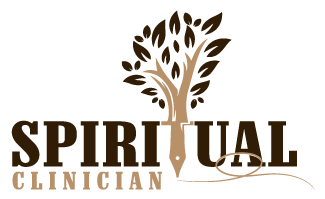CPE Certification
by Gordon J. Hilsman

by Gordon J. Hilsman
The process for certification of chaplains has been patterned after the one for educators which preceded it. It contains core elements of the educator certification process but differs significantly in intensity, scope, and tone. It tends to be much less confrontative while preparing applicants for a very different profession. A primary goal of the processes for certification in the APC, NACC, NAJC, and the Canadian CASC remains use of confrontation adequate to assess shared sets of competencies for chaplaincy and to thus maintain the quality of clinical ministry by well-integrated chaplains in North America.
What makes the practice of clinical pastoral care of patients and parishioners so unique is its vigorous mingling of cognition with strong and obvious or subtly discernable emotion. Chaplain education serves as the arena for engaging would-be pastoral care professionals because its programs are set in places where there are people experiencing the worst of life. Invariably health care patients, jail/prison inmates, hospice residents, and mental health patients feel deeply about fundamental aspects of their life situations. From ordinary daily apprehensions and annoyances, persons in such situations often escalate to cold, secretive fear, deep remorse, nagging hurt, and/or aggravating rage. A great number of them could use help with those feelings that can become overwhelming, at least temporarily. The behavioral sciences have made great progress in the past 150 years in care of those most troubles spirits. Chaplaincy has preceded those forms of care and still provides a vital link to them as often first to identify serious, painful personal, interpersonal, and communal issues, sensitively refer them, and partner in team treatment with their unique, highly trusted to be positive and extensive personal listening.
Chaplain certification – authorization to practice professional chaplaincy – is a small group testing out one’s practice as seen through the windows of stated competencies considered necessary for chaplaincy. The certifiers are optimally looking and listening for integration, a “making one” of several human functions of an applicant for certification—and for the applicant to do so well enough to be able to address the tasks of clinical spiritual care effectively in relationship with most every patient presented before them.
Some contexts harshly invite the responsibility for furthering our integration, though we can certainly reject the challenge. We are often pulled into some of the most effective arenas for doing that, such as: psychotherapy when motivated by genuine pain; major loss when repeatedly conveyed to another through courageous, extensive narrative; clinical supervision and mentoring when it is allowed to absorb us; carried-away romantic engagement and its subsequent intimate loving foray; and the vividly recognized approach of one’s own dying. All of these are examples of situations that cast us into choosing change that both hurts and promises.
The capacity to meet a crucial patient encounter with authenticity means: first conveying empathy about some aspect of the patient’s predicament; saying only what you mean but clearly saying it; allowing what you actually feel to significantly affect you in being responsive but not reactive; acknowledge those feelings as real and just fine, but not necessarily processed with the patient; believing in your current thinking about the patient and augmenting it with listening and careful questions and observations; and recognizing the implications of a unique care moment and embracing them attributing positive intent to that patient. All of these combined—thoughts, feelings, words, meanings, attitudes, and choices working together constitute personal integration. It is what is being sought, to an always unnamed degree, or ought to be, during a chaplaincy certification event.
When someone pins on a badge that blares “Chaplain” it ought to mean that the person wearing it carries a well-developed identity born of experience and enough personal integration events to render them consistently available to virtually any other person on the planet for authentic healing engagement. While no one is ever totally integrated – we live in incomplete evolution— true professionals know that a significant level of integration, which can only be subjectively assessed, is required for practicing their craft.
Certification interview teams are looking for a level of integration that will allow consistent authenticity in professional practice. Lack of it is more observable than its possession. Super nice compliance; unacknowledged contentiousness; subtle victim stances; inability to exemplify concepts or to conceptualize about events; humorless stridency; confusing verbosity; extensive nervous monologues; inability to see the interviewers as real people; these are all indicators, (and only indicators) to certifiers, that adequate integration was not able to be mustered in that moment. They do not mean the applicant is a lesser human being or even that they are not functioning as a fine chaplain with many of the people they care for.
There are also indicators that integration is being demonstrated. When interviewers encounter an applicant, a few hints that significant personal integration is being demonstrated include: